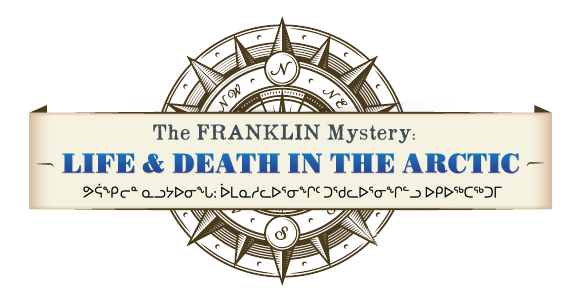Summary of Parks Canada's search activities 2008-2014 (2014)
In recent years Parks Canada with a number of partners has taken the lead in efforts to locate the wrecks of the Erebus and Terror in Arctic waters. Their mandate flows from the identification of the ships as a National Historic Site in 1992 – the only national historic site of Canada that had not been found until the recent discovery of Erebus. In their search, Parks Canada's Underwater Archaeology team has been taking advantage of state of the art modern technology of side scan sonar equipment and a single beam echosounder. These devices have enabled Parks Canada's Underwater Archaeology Unit, accompanied by partners with the University of Victoria's Ocean Technology Lab, the Arctic Research Foundation, Government of Nunavut, Canadian Coast Guard (DFO), Canadian Hydrographic Service (DFO), Canadian Ice Service (EC) and Canadian Space Agency (CSA), Defence Research and Development Canada (DRDC), and the Royal Canadian Navy (RCN) to systematically scan the ocean floor in areas considered to have high potential for finding the ships. Their criteria for determining the search areas derived from the analysis of historical records, ice and climatological analysis and the study of ocean currents. In 2012 the search area was defined as a grid around the reported location of the Erebus and Terror in Victoria Strait when abandoned by Franklin's party in 1848, and a track through Alexander Strait covering the probable route of drift to the south towards the area near O'Reilly Island where one of the vessels was almost certainly spotted by Inuit in the historic period. In September 2014 the searchers’ efforts were rewarded when they found the wreck of HMS Erebus in Wilmot and Crampton bay off the Kolchak Peninsula of the North American mainland.
A key find that led searchers directly to the wreck happened when the Sir Wilfrid Laurier’s helicopter pilot Andrew Stirling of Transport Canada spotted an iron object and a wooden artifact near the shore of one of these islands. He then enlisted the advice of archaeologist Doug Stenton of the Government of Nunavut and Scott Youngblut of the Canadian Hydrographic Service who was assisting Stenton with his land survey as part of the Franklin search on several low-lying islands in the eastern Queen Maud Gulf. After uncovering the object, Stenton noted broad arrow markings on its surface. Parks Canada senior archaeologist Jonathan Moore determined that the metal artifact was likely part of a Royal Navy davit used to lower boats carried by the Franklin vessels. Realizing that such a heavy object was unlikely to have been deposited very far from the ship it belonged to, the archaeologists immediately shifted their side-scan sonar search with Investigator to the waters surrounding the island. On 7 September 2014 they found the hull of a wooden ship in 11 metres of water near the island. It proved to be HMS Erebus.


